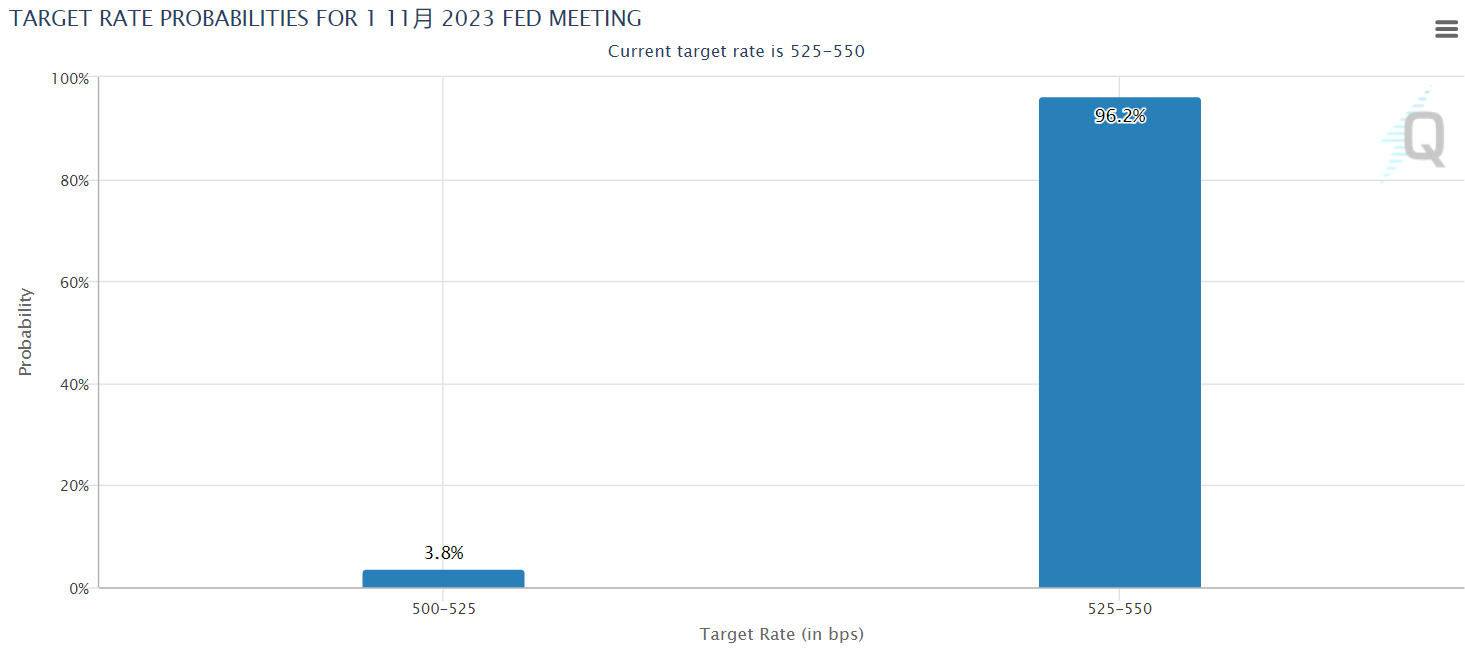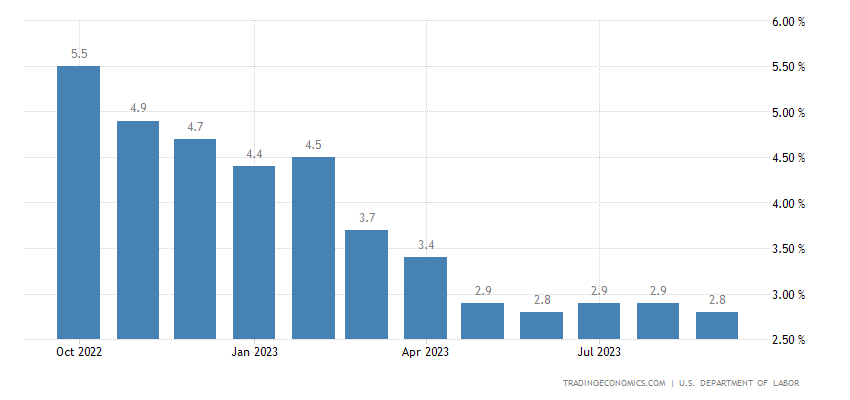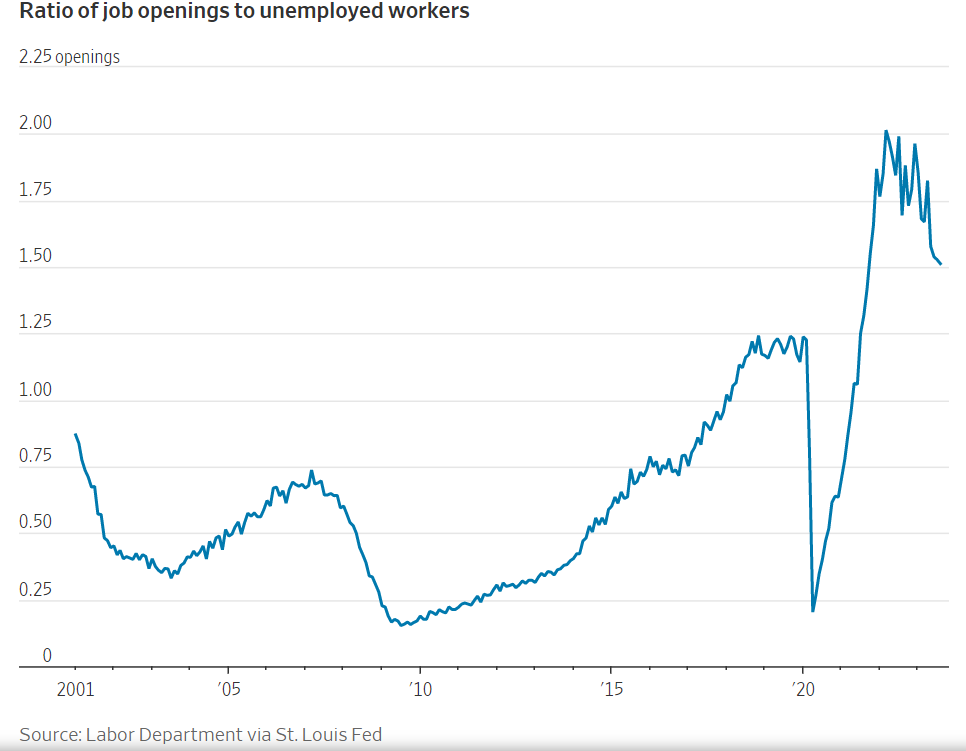The increased market volatility that started two weeks ago is likely to intensify, with a large amount of data being released this week.
On Wednesday, various data releases will begin: the ADP employment report, JOLTS, and ISM, followed by the Treasury bond auction at 1 pm Eastern Time, and then the FOMC interest rate decision.
Since a no rate hike in November FOMC is already the consensus expectation in the market, the focus will be on Powell's press conference.

During a special interview two weeks ago, Powell told investors not to think that the Fed's job is done even if there is no rate hike. It is expected that Powell will continue to convey this message in the statement and press conference.
So far, economic data continues to support the Fed taking more or longer tightening measures to bring inflation back to target levels.
Loosening versus tightening, Data versus estimates
Given this data, it is difficult for the Fed to indicate that it has stopped raising rates. The super core PCE personal consumption expenditure increased by 0.42% month-on-month in September, higher than the average of 0.35% over the past 12 months, and extremely volatile, making it difficult to determine whether the inflation rate is gradually declining. If this average is still significantly higher than pre-pandemic levels, it will not prompt the Fed to change its wording.

Jay Powell has repeatedly stated "we have to watch" and left more possibilities open. For the Fed, October data may be as strong as September data. Preliminary PMI data shows a rebound in both the services and manufacturing sectors in October, with a trend of improvement since the summer.
At the same time, hiring data may have reached a peak, indicating that the number of job opportunities has stabilized and stopped declining in recent months. Although JOLTS is extremely volatile, it should show a similar base effect to some extent due to large-scale revisions and unpredictability.
The lagging effect of monetary policy may be longer than some people think, or the impact of monetary policy has already been felt and interest rates are not restrictive enough.
Considering that monetary policy works by changing financial conditions, which have already significantly eased in the past six months, the policy seems to be not restrictive enough. Bloomberg's financial condition model shows that financial conditions only began to tighten since mid-October, but have been easing since early June.
Why does tightening have little impact on the economy?
The purpose of monetary tightening is to suppress demand, mainly by raising policy interest rates to guide the overall financing costs in society to rise, thereby affecting the growth of new demand and existing costs.
It mainly achieves this through two points: 1) financing costs higher than investment returns, suppressing the demand for incremental financing; 2) increased pressure on existing interest payments, crowding out other consumption and expenditure.
However, since January 2022, despite raising interest rates by 525 basis points, the transmission of tightening to credit tightening has not been as expected, mainly due to three reasons:
The broad investment return rate is higher than the financing cost, resulting in a slow decline in incremental demand;
The high interest rates have limited transmission to locked-in existing interest payments, without significantly eroding consumption and expenditure;
Government credit is not entirely driven by the above economic and cost factors. In Q2, due to the resolution of the debt ceiling and the "forced" expansion of bank risk exposure, it offset the contraction of the private sector and became the "source" of the economic acceleration in the third quarter.
When the market believes that the Federal Reserve will stop raising interest rates after the collapse of SVB and the US dollar will plummet, financial conditions also become loose. When the market believes that the Federal Reserve is not serious and long-term interest rates decline, financial conditions become loose.
The market believes that the Federal Reserve has already stopped raising interest rates in March, which has narrowed credit spreads, boosted stock prices, and caused the US dollar to fall, thereby driving accelerated economic growth.
Due to the reacceleration of the economy and the guidance of the Federal Reserve, the market also had to catch up again, resulting in a surge in bond yields, a strengthening US dollar, an expansion of credit spreads, and a decline in the stock market in Q3. It was not until after the September FOMC meeting that the bond market realized this. However, this also means that in the next few months, there will be a slowdown in the economy and a resurgence of recession risks in 2024, or even worse stagflation risks, which is not surprising.
Perhaps this is part of the Federal Reserve's plan to achieve a soft landing.

Comments
[微笑] [微笑]